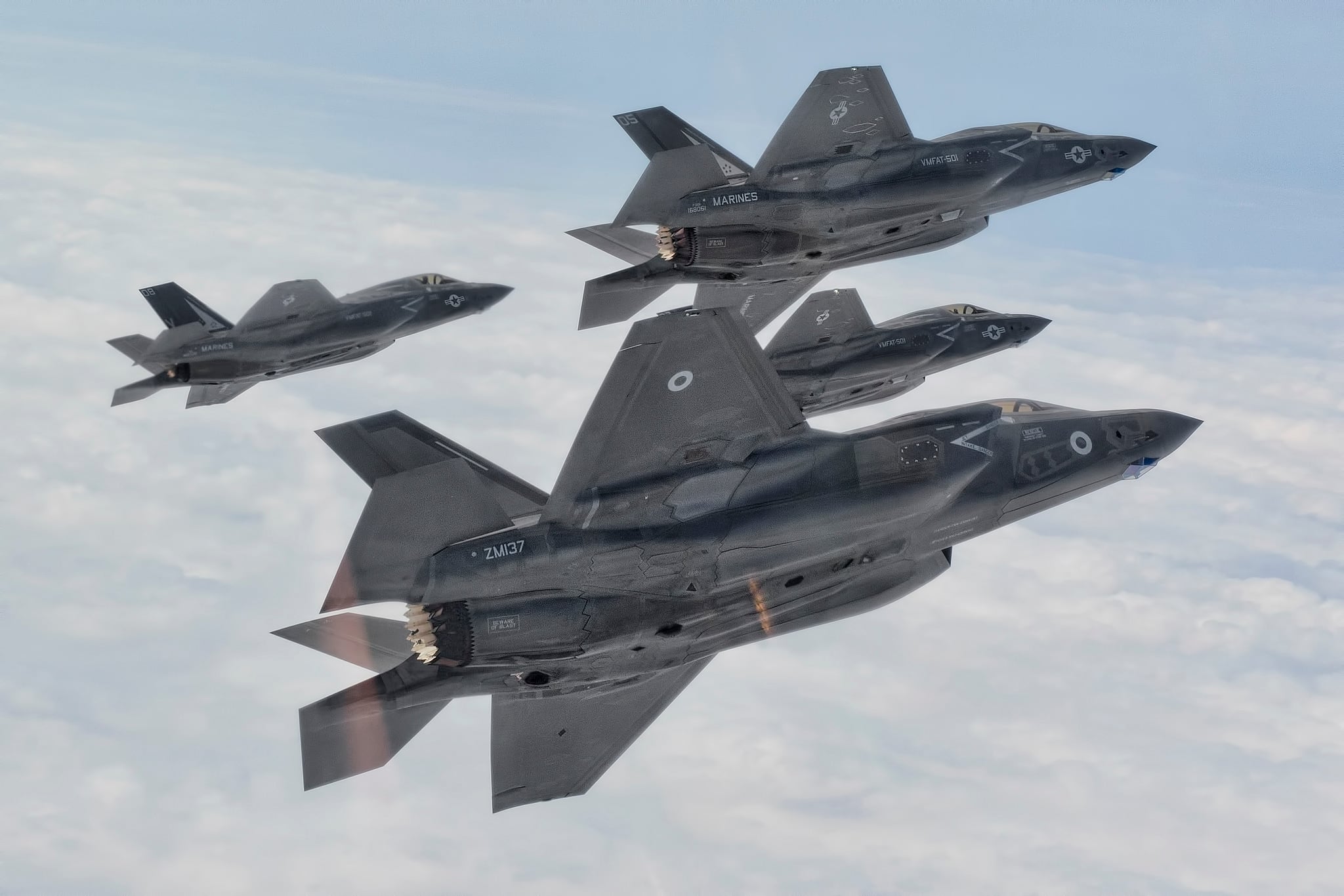The F-35B is "ready to go right now" if it is needed to fly combat missions, the head of Marine Aviation told reporters Friday.
Although the F-35B is still being tested, the Marine Corps declared in July 2015 that it was ready to fly operations. The Marine version of the F-35 needs upgraded software and other improvements.
Nevertheless, there is no doubt that the F-35B is ready for combat, just as every other type of aircraft the Marine Corps has, said Lt. Gen. Jon Davis, deputy commandant for aviation.
"There were a lot of people out here that said, 'Hey, the Marines are just going to declare IOC [initial operational capability] because it would be politically untenable not to do that," Davis said at an event Friday at the American Enterprise Institute think tank in Washington, D.C. "IOC in the Marine Corps means we will deploy that airplane in combat."
Talking to reporters after the event, Davis was asked if the F-35B could be deployed to fight the Islamic State group in Iraq and Syria.
"If we think we need to do that, we will," Davis replied. "We're ready to do that."
The Marine Corps' first F-35B squadron is expected to arrive in Japan in January and then go to sea with the 31st Marine Expeditionary Unit in the spring of 2018, he said. The service's second F-35B squadron is expected to go to sea in the summer of 2018.
"Do we keep it on track or do we do something different: That's up to the national command authorities," Davis said. "But it's ready to go right now."
One of the F-35B's advantages is that it can carry 3,000 pounds more ordnance than F/A-18 Hornets.
"As Marines, there's times when we want to carry a lot of bombs and go knock on doors," he said.
In testing, the F-35B has proved to be "phenomenally successful," showing that it can easily destroy the most advanced enemy aircraft defenses and fighters, Davis said. In fact, F-35B pilots made a demonstration of the aircraft's capabilities last month more challenging than Davis had asked for because they did not feel it was difficult enough, he said.
"I watched how they went and did this with two airplanes with pylons and two without," Davis said. "It was a work of art. That's not the way my brain works but that is the way their brains are working."

Four F-35Bs from Marine Fighter Attack Training Squadron 501 (VMFAT-501) fly near their base a MCAS Beaufort, S.C.
Photo Credit: Lockheed Martin
In little more than five minutes, the F-35Bs destroyed the targets and a surface-to-air-missile site using pictures from a forward air controller that were relayed to the aircraft through the cloud cover, he said.
Davis rebutted critics who claim the F-35B is "too much technology for the Marine Corps," explaining the Marines' mission is to be able to fight anywhere at any time against anybody.
To drive his point home, Davis recalled a conversation he had with retired Marine Lt. Gen. Frank Petersen Jr., the Marine Corps' first African-American aviator and general officer. The two met before Petersen died in August.
"I said: Well, some people think we're getting too much technology," Davis said. "He goes: 'I was shot down in Korea and I was shot down in Vietnam; never once did I think I had too much technology. Go tell them they're idiots.'"




